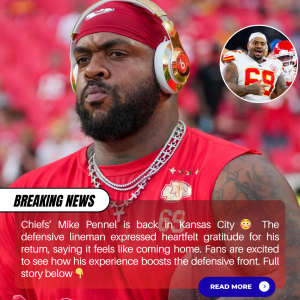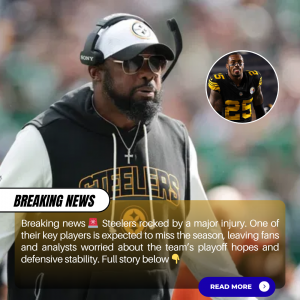
Pittsburgh Steelers’ Offense Shows Promise Under Arthur Smith — But Costly Mistakes Keep Holding Them Back
The Pittsburgh Steelers entered the 2025 NFL season with one clear goal: restore balance on both sides of the ball and find consistency on offense. Through eight weeks, there’s evidence that progress is finally being made — but also signs that familiar problems remain.
With Aaron Rodgers guiding the offense and Arthur Smith calling plays, the Steelers have found flashes of rhythm and precision that were sorely missing in recent years. They’ve climbed the league rankings in several key categories, particularly in red zone execution and drive efficiency. But persistent penalties, situational lapses, and self-inflicted wounds have kept Pittsburgh from turning potential into dominance.
Offensive Efficiency Rising Under Arthur Smith

Statistically, this is one of the most productive Steelers offenses in recent memory. They currently rank seventh in the NFL in percentage of drives ending in a score, a notable improvement from ranking 23rd just two seasons ago. That figure reflects a more efficient, methodical approach — and a scheme that maximizes Rodgers’ ability to control tempo and identify defensive mismatches.
Their red zone success has been even more impressive. Pittsburgh ranks third in red zone efficiency, trailing only the Kansas City Chiefs and San Francisco 49ers. When the Steelers reach scoring position, they’ve capitalized, scoring touchdowns on nearly 70% of those opportunities.
Yet, as offensive coordinator Arthur Smith acknowledged this week, the challenge isn’t finishing drives — it’s sustaining them long enough to get there.
“We were in way too many third-and-longs,” Smith said Thursday after reviewing film from the team’s loss to the Green Bay Packers. “We have to do a better job there. When we stay ahead of the sticks, we score. When we don’t, we stall.”
Third-Down Troubles and the Penalty Problem

The numbers back Smith’s concern. Pittsburgh currently ranks 16th in third-down conversions, converting just 39% of attempts. On the defensive side, they’re allowing opponents to convert 41.8% of their third downs — 24th in the league — creating a frustrating imbalance between offensive efficiency and defensive reliability.
For a team that prides itself on discipline and situational football, these third-down numbers represent a serious concern.
One moment from the loss to Green Bay perfectly encapsulated the issue. Early in the fourth quarter, trailing by ten points, the Steelers faced a manageable 3rd-and-2. A conversion could have extended a crucial drive. But after the whistle, wide receiver DK Metcalf drew an unnecessary personal foul penalty, pushing Pittsburgh back to 3rd-and-17. On the ensuing play, Rodgers was sacked, ending the drive — and effectively, their comeback hopes.
Smith didn’t single out Metcalf by name, but his frustration was clear.
“Some of those penalties we got, we can control,” he said. “We have to do a better job staying on track so we can get in the red zone more.”
Through eight weeks, the Steelers have faced third-and-seven or longer on 37 occasions, compared to 40 attempts of third-and-six or shorter. That ratio speaks to an offense constantly operating uphill — not because of talent, but because of execution.
Aaron Rodgers’ Influence and Growing Pains
Rodgers’ presence has undeniably elevated the Steelers’ offense. His ability to diagnose defenses pre-snap and extend plays post-snap has opened up opportunities that simply didn’t exist in recent years. His chemistry with DK Metcalf and tight end Pat Freiermuth has grown weekly, while rookie running back Jaylen Warren II has emerged as a dynamic dual-threat option.
Still, the unit remains a work in progress. Rodgers, now in his age-42 season, has thrived in short-yardage and red zone situations but struggled to connect deep consistently. Part of that is by design — Smith’s offense emphasizes timing routes and power formations — but the lack of explosive plays limits Pittsburgh’s margin for error.
The offensive line has shown improvement, particularly in run blocking. Left tackle Broderick Jones and guard Isaac Seumalo have provided stability, and second-year center Mason Cole has taken a noticeable step forward in protection calls. However, penalties have repeatedly erased positive gains — a recurring issue that’s plagued Smith-coached teams in the past.
A Balanced but Inconsistent Team Identity
Perhaps the most frustrating element for Pittsburgh fans is the inconsistency. The Steelers are capable of looking like an elite offense for stretches — then unraveling with mental mistakes.
They’re top-10 in red zone touchdowns and top-five in average time of possession per scoring drive, yet they’ve also gone three-and-out on nearly 30% of possessions, one of the league’s highest marks. Their scoring drives are efficient, but their dry spells are brutal.
This inconsistency mirrors their overall record — a team hovering around .500, oscillating between contender and pretender week to week.
The good news? The root causes are fixable.
“We’re not getting beat because we can’t execute the plays,” Rodgers said after last Sunday’s game. “We’re getting beat because we’re beating ourselves. You clean up a few mistakes, and this whole story looks different.”
The Path Ahead: Colts Present Opportunity
Looking ahead to Week 9, the Steelers have a chance to right the ship against a vulnerable Indianapolis Colts defense. The Colts rank 30th in the league in third-down defense, allowing opponents to convert 47.1% of attempts. They also sit 18th in red zone defense, meaning Pittsburgh should have ample opportunity to move the chains — if they can stay disciplined.
Arthur Smith knows this could be the turning point.
“We’re close,” Smith said. “When we execute, we’re as tough to stop as anyone. But we’ve got to eliminate the self-inflicted stuff — the holds, the personal fouls, the drops. That’s what separates good teams from great ones.”
Defensively, Pittsburgh will also have its hands full. The Colts’ offense ranks top-10 in scoring and has found success attacking teams vertically. If Rodgers and the offense can establish rhythm early and sustain drives, it could take pressure off a defense that’s been stretched thin by injuries and long field situations.
A Measured Optimism in Pittsburgh
Despite their frustrations, there’s growing optimism in Pittsburgh. For the first time in years, the offense feels functional — even promising. The scheme fits the personnel, the quarterback commands respect, and the locker room has bought into Smith’s vision.
The next step is translating potential into performance. That means avoiding the unnecessary penalties, sustaining drives, and maximizing opportunities when they arise.
The Steelers have scored on seven of their last ten red zone trips — a sign that when they get there, they finish. The next challenge is simply getting there more often.
“We’ve shown we can score,” Rodgers said. “Now it’s about doing it consistently, without shooting ourselves in the foot.”
For a franchise built on discipline and execution, that message couldn’t be more fitting.
Bottom Line
The 2025 Steelers are caught between progress and frustration. Arthur Smith’s offense has brought measurable improvement, and Rodgers has provided leadership and efficiency. But until Pittsburgh learns to stop beating itself — with penalties, third-and-long situations, and mental lapses — the climb back to playoff contention will remain steeper than it needs to be.
As the midseason mark arrives, the path forward is clear: play cleaner football, trust the system, and let talent — not errors — decide the outcome.
If they can do that, the Steelers might not need a blockbuster trade or dramatic roster change to spark their turnaround. They might just need to get out of their own way.





